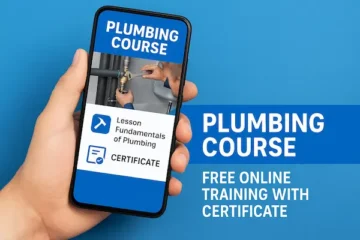Reading Tips to Optimize Your Productivity: Mastering Efficient Techniques
Many people look to improve their reading skills to get more done each day. Busy schedules mean time is valuable, and efficient reading can free up more hours.
With the right tips, anyone can boost their productivity while diving into books or articles.
Reading with purpose is key to gaining the most from any text. Setting clear goals before starting a reading session can enhance focus and comprehension.
Taking notes and summarizing information can help retain important details.
Skimming and scanning techniques save time and highlight essential points. Knowing when to slow down for deeper understanding versus when to quicken the pace allows for strategic reading.
These small changes may result in a big difference in how much one can achieve through reading.
Establishing Your Reading Objectives
To read more productively, people need to establish clear reading objectives. Knowing their goals helps them focus on the material and increases their productivity.
Setting clear intentions and understanding what drives them can make the reading experience more meaningful.
Setting Clear Goals
Creating clear goals starts with identifying the purpose of the reading task. Are they reading to gather information, for enjoyment, or to improve a skill?
Having a clear purpose shapes how they approach the task.
Next, specific targets should be outlined. A student might aim to understand a chapter before a test, while someone else might want to finish a book by the weekend.
These targets provide a roadmap and help them measure progress. Aiming for specific outcomes helps readers stay on track.
Understanding Your Motivation
Motivation plays a crucial role in maintaining reading momentum. By exploring what drives them, readers can leverage their inner drive.
Do they read because they’re curious, or is there another reason?
Identifying personal interests or needs can increase reading enjoyment and efficiency. If someone loves science-fiction, they might read more enthusiastically in that genre.
For goal-directed reading, relating the material to their personal or professional life can boost motivation.
Recognizing these motivational elements helps increase focus and productivity while reading.
Creating an Effective Reading Plan
Creating an effective reading plan boosts productivity. It involves setting priorities and scheduling reading time smartly.
By doing this, readers can manage their time better and focus on what matters most.
Strategic Scheduling
Finding the right time to read each day helps form a good habit. Consistent scheduling beats random reading.
Early mornings or late evenings work well for most as it’s usually quieter. Adjust this to fit personal routines.
Using a calendar can benefit readers greatly. Mark daily reading times and stick to them.
Set reminders on phones or devices. Break long passages into small, manageable tasks. A ten-minute read during lunch can be productive.
Adding buffers between reading sessions allows for reflection and prevents fatigue. Overloading with too much reading at once is counterproductive.
Control the pace to maintain focus and comprehension.
Prioritization of Reading Material
Sorting out what to read first is essential. Not all reading material has the same importance.
Tackle necessary tasks before moving on to extra reading. Decide which topics are critical.
A reading list organized by priority helps. List books, articles, or papers needed for work or study.
Focus on the ones that align with current goals. Create separate lists for leisure reading to avoid mixing them.
Using a notebook or digital app to track progress can aid in maintaining priorities. Check off completed items to motivate continued progress.
Keep materials visible to avoid forgetting essential reading tasks. Prioritizing makes reading more meaningful and targeted.
Reading Techniques for Enhanced Comprehension
Improving reading skills can boost comprehension and save time. Using the right techniques can help with better understanding and information organization.
Active Reading Strategies
Active reading involves engaging with the text. Readers should ask questions while reading. This helps think critically about the material.
They should also predict what comes next, which increases anticipation and retention.
Breaking down the text into smaller parts and summarizing each one helps with understanding complex information.
Visual aids, such as mind maps or charts, can also aid in grasping important points. These strategies make the reading process more interactive and improve comprehension.
Annotation and Note-Taking
Annotations and note-taking are key for organizing thoughts. Highlighting key points can emphasize important details.
Using sticky notes or writing in the margins helps link ideas together.
Summarizing sections in your own words reinforces memory. Outlining the text structure aids in identifying main themes and supporting details. Use bullet points for quicker review.
Effective note-taking should balance detail with brevity to save time while capturing essential information. This combination can enhance both comprehension and retention without overwhelming the reader.
Minimizing Distractions for Improved Focus
Reducing interruptions can boost focus when reading. Creating a calm environment and staying present helps manage distractions.
Creating a Distraction-Free Environment
To eliminate distractions, choose a quiet spot for reading. Noise-canceling headphones can help block out sounds.
Keep supplies like pens and paper close by to avoid getting up during the task.
Turn off notifications on devices to prevent interruptions. Declutter the space to limit visual distractions.
Breaking tasks into smaller parts and setting short reading sessions also aids focus. By planning breaks, one can refresh without losing concentration.
A distraction-free space helps in maintaining focus and reading efficiency.
Practicing Mindfulness While Reading
Mindfulness techniques can help in staying focused while reading. Deep breathing before starting can clear the mind.
Concentrating on words without letting thoughts wander is essential.
Practice active reading, which involves engaging fully with the text and asking questions about it.
This keeps the mind from drifting to unrelated thoughts. Visualization and making mental images from the text can also improve engagement.
Practicing mindfulness helps readers stay attentive and improves comprehension.
Leveraging Technology and Tools
Technology offers many solutions to enhance reading efficiency and productivity. From apps that help organize reading lists to tools that track time, individuals can find ways to better manage their time and tasks.
Utilizing Reading and Productivity Apps
Many apps can streamline your reading experience. For example, apps like Pocket and Scribd let users save articles and books for later, making it easy to access content on the go.
These apps are designed with features like offline access and personalized recommendations. With such features, users can save time and focus on materials that match their interests.
To-do list apps like Todoist or Any.do are also helpful. They allow users to organize reading tasks, set priorities, and receive reminders.
By keeping track of what needs to be read, individuals can boost their productivity and ensure they stay on top of their goals.
Time Tracking and Project Management Solutions
Time management is key to productivity.
Tools like Clockify and RescueTime help users track how much time they spend on reading or related tasks. These tools can highlight distractions, helping readers make better use of their time.
For larger projects, project management platforms like Quire and Trello are beneficial.
They enable users to manage projects by creating boards, tracking progress, and setting deadlines. This organized approach can help individuals manage their reading lists alongside other tasks, ensuring nothing gets missed.






